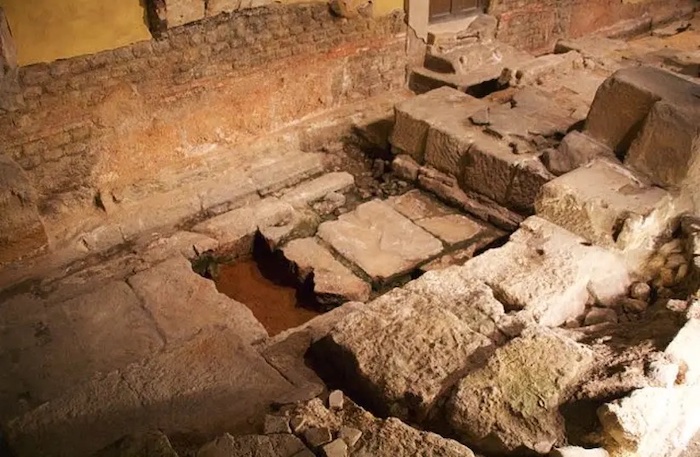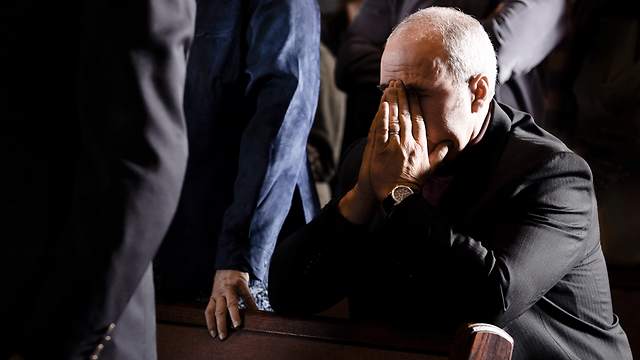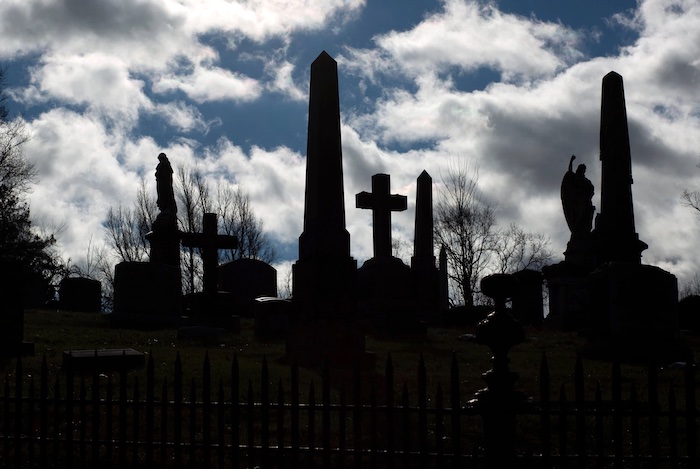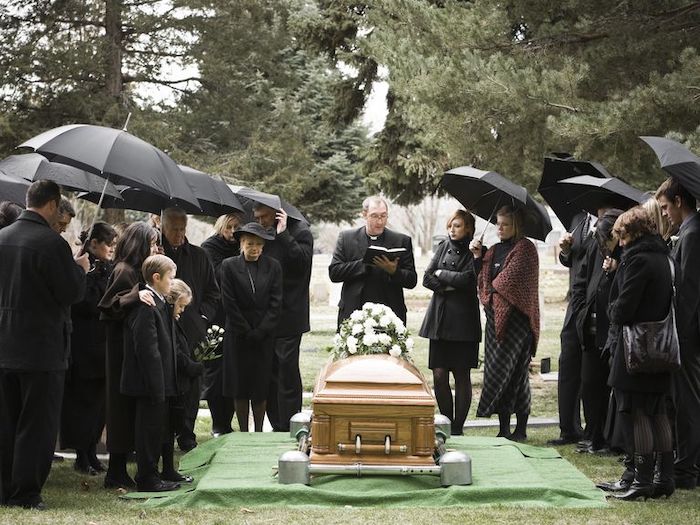— It’s the latest in L.A.’s death positivity movement
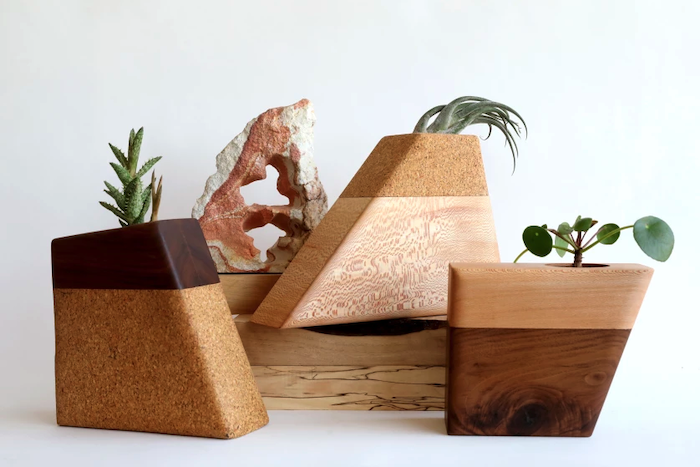
By Lisa Boone
When Los Angeles woodworker C.C. Boyce selects locally sourced pieces of California sycamore and speckled maple at Angel City Lumber in Boyle Heights, the artisan has powerful inspiration for her custom-made planters: the deceased.
“I never intended to get into the death care industry,” Boyce says of the planters she designs and builds in her downtown Los Angeles studio. But these are not like the planters you find at plant stores and nurseries. Her planters are, in fact, urns filled with cremated remains and topped with a living plant.
She is turning urns into vessels for life, inspired by universal stories of loss.
“It has been such a rewarding experience,” she continues. “Especially during the pandemic. It felt good to know that I was helping people. We all felt that hopelessness while sheltering in place. It emphasized that you never know what someone is going through.”
Urns have been around for thousands of years, but the funeral industry has been slow to update them for the 21st century home.
Often, Boyce says, clients will reach out to her because they are struggling to find an urn “good enough” for their loved one. A person’s essence is eternal, after all, which explains why so many of us want to keep a part of our loved ones close after they have died.
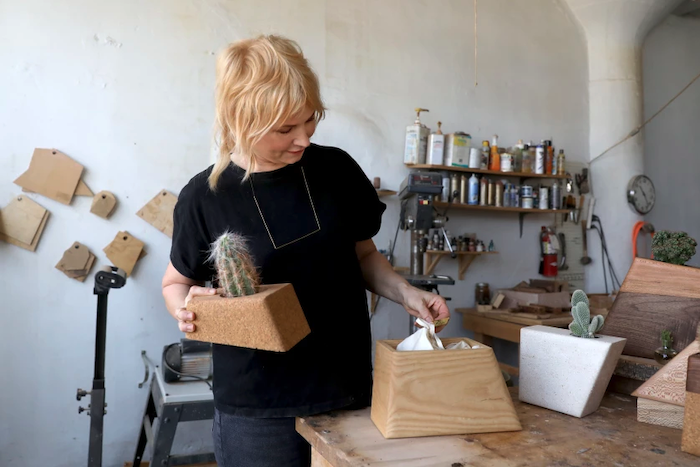
Their singularity is also what makes it so hard for us to process their absence, which is why so many urns end up gathering dust on bookshelves and inside closets. In some instances, Boyce’s clients have waited so long to find an appropriate resting place for their loved one, they can’t remember where they placed the ashes.
“I had a man message me that his wife died three years ago and he had given up trying to find something for her because everything was ugly, mass-produced and not her style,” Boyce says. “Another man said his design-savvy partner would be so angry with him if he put him in something ugly. I hear a lot of stories like that.”
Her untraditional designs are a part of the emerging death positivity movement, a largely women-driven attempt to shatter taboos and discomfort regarding death. You can see it everywhere when it comes to death services: in death doulas, green burials, diamonds created from ashes, death cafes and human composting known as natural organic reduction.
Urns, in particular, have been long overdue for a makeover.
People don’t like the fact that urns look like urns because they remind us of the morbid caricature of death, says Jill Schock, a Los Angeles death doula who works primarily with terminally ill cancer patients.
“The shape of the traditional urn is so embedded in our psychology,” says Schock. “We all have unconscious anxiety about death. When people see a traditional urn in your living room, they immediately know what it is and it makes them uncomfortable.”
She estimates that more than half of her clients, and Baby Boomers in particular, choose cremation over more traditional and costlier burials.
Enter Boyce’s Planturn, a modern, minimal and decorative cremation urn ($250-$600) composed of two pieces of wood and topped with a living plant. While many urns are vase-shaped, Boyce’s urns are geometric and created with woods sourced from fallen trees and coated in an eco-friendly finish.
The urns come in three sizes to accommodate pets and humans along with a muslin bag to hold the cremains and are topped with a plant holder. Boyce recommends succulents, cactuses and air plants because they don’t mind being crowded and don’t need a lot of water.
The top and the bottom of the urn are secured by strong hidden rare-earth magnets to create a seamless piece, often from two types of wood or cork. Sometimes people share stories with her, and sometimes they don’t. “They often have a lot going on,” Boyce says. “Grief affects people differently, and I try to respect that.” Over the last year, she has made urns for pets, parents and grandparents, a 19-year-old woman, a 2-year-old who died of leukemia, and an infant. “Those are heart-wrenching,” she says. “I use speckled maple for infants because it represents innocence.”
Boyce, 47, grew up in Wisconsin, the daughter of an engineer who installed a family wood shop in the basement. When she was 5, she attended her first funeral, an event she remembers vividly.
“They laid out my great-grandmother’s body at the wake, and everyone paid their respects,” she recalls. “I remember being curious and unafraid. They put a rosary in her hands, and I remember playing with it. The funeral director got miffed, and my mom told him to allow it because she was my great-grandmother. My mom was the one who made it so that death was not taboo, that it was something that should be acknowledged and talked about. A lot of people are uncomfortable with death. I’m not.”
Thirteen years later, during her freshman year of college, she experienced a series of losses so staggering, she worried her college professors didn’t believe her when she said she missed multiple classes to attend funerals. “I lost five people close to me in one year. Young, old, expected, tragic. An accidental overdose. A murder. A 4-year-old cousin was killed in a car accident.”
Last year, she lost her mother to COVID-19, and had two pets die.
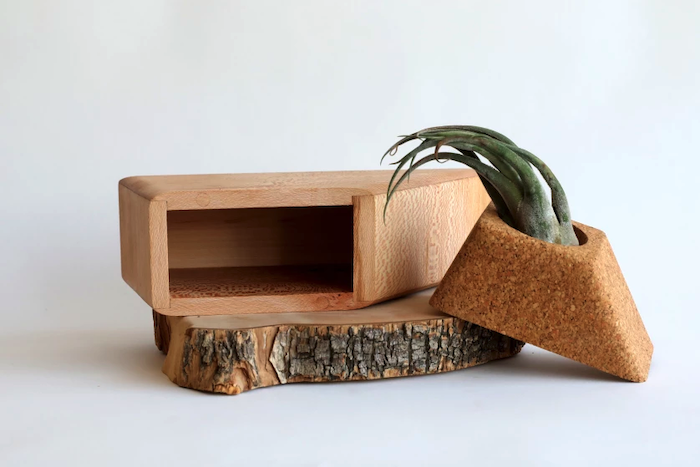
The interweaving of death and craftsmanship clearly inspires her work.
“Experiencing so much loss has taught me to hold on to empathy,” she says. “I never really lose sight of what people are going through. Sometimes people don’t take pet empathy seriously, but I do. I’m always willing to listen. And I always think about the people who died as I make each urn. Sometimes I try to match the wood to the pet’s fur.”
Her clients are grateful to have something so personal that reminds them of the ones they lost.
Julie Maigret, a Los Angeles interior designer who purchased a Planturn for two departed dogs and a cat, says no one has ever guessed that the planter in her living room is an urn. “I tend to it like a little garden,” she says. “I have something beautiful that reminds me of my pets. I placed a tiny trailing plant in the urn not realizing it is called red stem tears. There is nothing out there like what C.C. is making and that’s symbolic of the being that you lost. That’s very powerful.”
Juggling restaurant work and custom woodworking jobs since 2015, Boyce made her first Planturn in 2018 as a custom request for a friend’s father. Thinking it was a one-off, she was taken aback when she received an avalanche of positive responses after sharing the planter-urn on her Instagram account.
Boyce’s first thought on reading the comments was: “Am I on to something?”
For a year, she researched cremation, urns and the death care industry as she built prototypes in a variety of shapes and sizes. In 2019, she launched a successful Kickstarter campaign to help buy the equipment she needed to make the urns in an efficient manner. When she was laid off from her restaurant job in March 2020 due to the pandemic, it was the impetus she needed to pivot to making Planturns full time.
“I thought, ‘We’re in a pandemic, and I make cremation urns. Houseplant sales have skyrocketed. It’s now or never. I didn’t think I could quit my job until the urns were more successful. But as it turned out, I had to make the urns successful because I lost my job.”
As someone who deals with death regularly, Schock has seen how customized urns like these can help people process death.
“I know that people who have lost someone enjoy being around their remains,” she says. “This is the reason why people visit a cemetery or have an urn: They want to be close to their loved ones. It’s important to have the urn out and smile and think there’s my loved one, pet or child.”
That is Boyce’s mission.
Complete Article ↪HERE↩!

